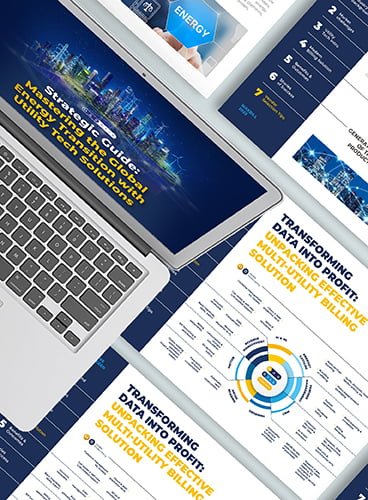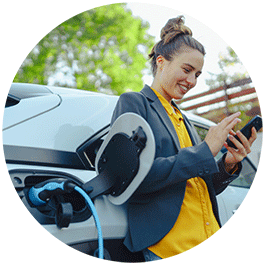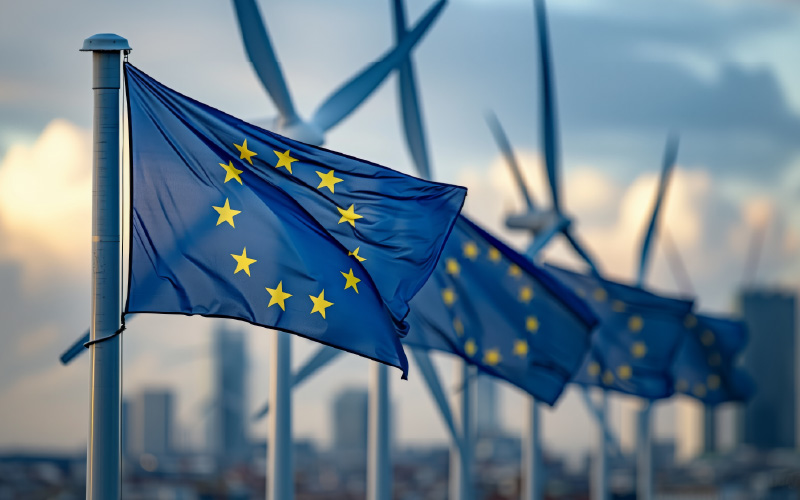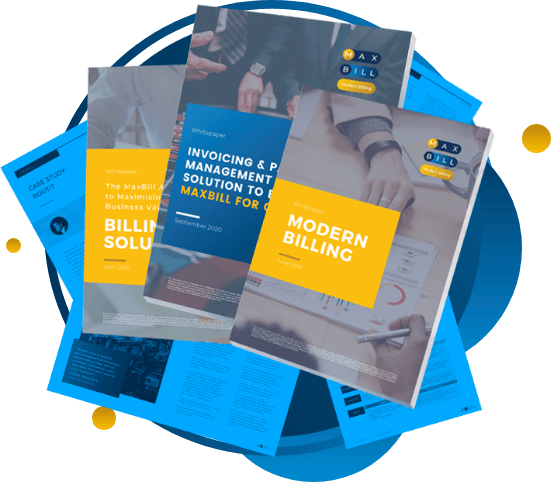What about Energy & Utility tech developments in 2024?
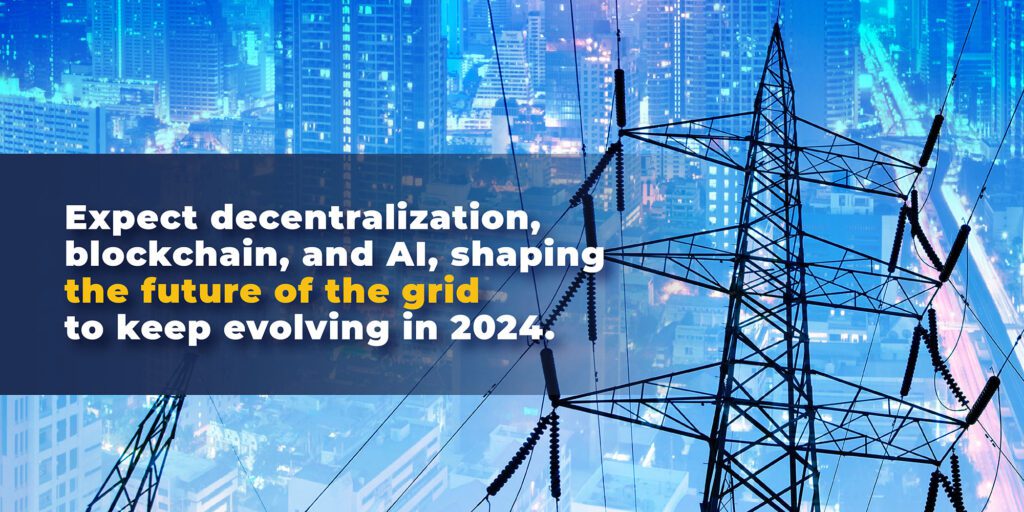
2023 paved the way for decentralisation, blockchain, and AI, shaping the future of the grid. Anticipate these trends to persist as we move into 2024.
Decentralisation
Consumers are showing a monumental shift towards decentralised energy systems, taking greater control over their energy fate. By embracing technologies like rooftop solar panels and storage solutions, individuals are not only powering their homes but also feeding excess energy back into the grid and engaging in peer-to-peer trading. This empowered approach not only promotes sustainability but also marks a strategic response to the escalating concerns of rising energy costs and potential disruptions.
In the UK, the National Grid has witnessed a remarkable surge of over 40,000 new connections since April 2023. However, with this newfound autonomy comes the imperative for adaptability and flexibility, ensuring stability in the face of evolving energy needs. Enter Octopus, a frontrunner in the UK energy market, announcing a groundbreaking achievement: one million customers eagerly signing up for a demand flexibility scheme for the winter season of 2023/24.
The future grid
Peering into the nebulous realm of the 2050 grid, stakeholders are met with a myriad of possibilities outlined by authoritative bodies like the IEA, IRENA, and the EU. With estimates suggesting Europe alone requires a staggering €584 billion ($641 billion) by 2030, the race towards grid modernization intensifies, marking a pivotal moment in energy infrastructure investment.
At the heart of this transformation lies the proliferation of smart metering, heralding a new era of data-driven grid management. The emphasis on speed becomes paramount. Moreover, as the grid expands and upgrades, the integration of innovative technologies like dynamic line rating and FACTS promises to unlock unprecedented levels of flexibility and efficiency, reshaping the landscape of energy distribution for generations to come.
Blockchain, Web3 and AI
Issues such as scalability, interoperability, and energy efficiency have been tackled, paving the way for blockchain’s resurgence in novel applications. Among these, the tracking and certification of renewables, e-fuels, and CO2 emissions have garnered significant attention.
As industries shift towards circularity, blockchain, coupled with emerging Web3 technologies like self-sovereign identities, is poised to revolutionise product tracking, particularly in sectors such as battery manufacturing. With Europe leading the charge in implementing battery passports, the digitalization of product certification is set to become ubiquitous, ensuring transparency and sustainability across the supply chain.
Meanwhile, Artificial Intelligence (AI) continues its widespread integration, particularly in data-related applications. However, the spotlight is now on generative AI, with utilities and companies eyeing its potential for both customer-centric and internal operations. Although only a few pioneers, like E.ON, have publicly embraced generative AI, these early adopters are poised to gain a competitive edge in shaping the future landscape. As blockchain and AI converge, they are not only transforming the energy sector but also laying the groundwork for a more sustainable and efficient circular economy, where transparency and innovation reign supreme.
What hinders the full potential of the full potential of consumer-side flexibility? The study “The Power of Flex.”
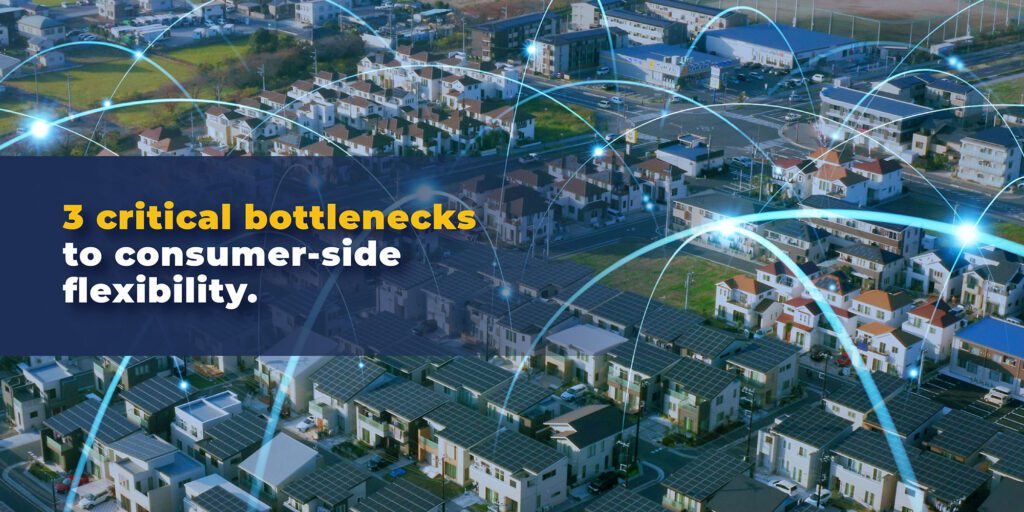
Based on the TSO Group’s study on power flexibility, ‘The Power of Flex.”
At the Enlit Europe 2023 event, attendees had the chance to engage in a session discussing the TSO Group’s study on power flexibility, ‘The Power of Flex’, featuring Hanne Pittomvils, Elia’s Analyst for System of the Future.
According to Pittomvils:
Despite existing models where flexibility on the consumer side yields financial benefits for both residential and industrial clients, three significant business challenges are hindering the full exploitation of the potential inherent in flexibility mechanisms. These are:
- Digital Infrastructure Gap
While some European countries have adopted smart meters, Germany and Belgium largely use analogue meters, limiting real-time consumption data. Transitioning to smart meters is crucial for adapting usage based on pricing, but issues like lack of standardisation and data access challenges hinder this progress.
- Market Value Creation Obstacles
Competitive, time-based energy pricing is rare, and conflicting signals reduce flexibility’s impact on bills. High requirements for new suppliers and BPRs also slow down the development of competitive services, affecting consumer adoption of flexible models.
- Consumer Engagement Shortfall
Residential consumers are often hesitant about energy changes due to comfort and privacy concerns. Companies also lack awareness of the benefits of flexibility, not incorporating it into their strategic plans.
Solutions to Overcome Flexibility Challenges
- Encouraging Financial Incentives
Elia stresses the need to make flexible consumption part of daily life, urging market collaboration to promote innovative business models and integrate flexibility into the energy sector.
- Improving Data Access for Providers
Elia underlines the urgency for European countries to facilitate easier access to smart meter data and share energy data from devices like batteries and EVs. Creating a secure data exchange environment is essential for service delivery and efficient grid management.
- Advancing Flexibility-Ready Devices
Elia’s report suggests electrical devices like EVs and batteries must meet certain standards to provide flexibility. These include adaptability to external signals and compatibility with other devices. Elia advocates for standardisation and a ‘flex-ready’ label, developed in partnership with manufacturers and system operators.
What is a good bill for a utility customer? By Utility Week & PayPal.
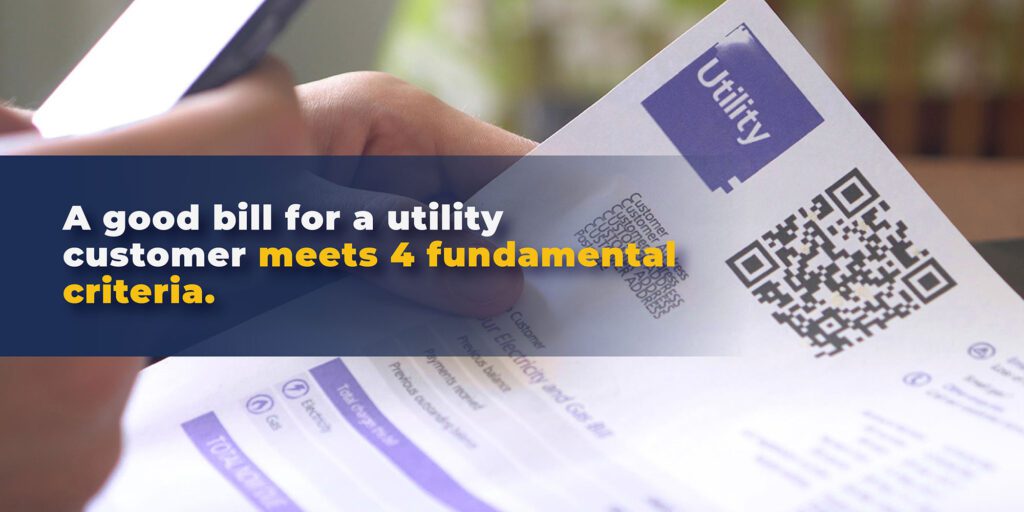
Based on Utility Week Intelligence and PayPal.
As leaders in utility billing software and an energy billing system, we know everything about bills! This time, we’re distilling the report by Utility Week Intelligence Research Report with PayPal, we can outline that a good bill for a utility customer meets the following criteria:
- Customers fully understand them 👉 Make sure you avoid flawed digital strategies that make customers unhappy and do not know what they pay for. Piece of cake, huh? Yet, a common practice in the industry.
- Pay-as-you-go options work better than prepayment meters 👉 They empower customers with immediate control over their energy usage, providing a flexible solution for those who prefer or need to manage their expenses closely.
- Varied payment strategies = good customer service 👉 Do you allow paying by not just Direct Debit but also credit and debit cards, Apple Pay, and Google Pay?
- Utilities leverage digital customer service channels, which especially makes sense for prepayment customers with certain debt conditions 👉Do you offer an app or other channel to facilitate a loan provision if you see customers in need of financial assistance?
Why are Utilities recognised as the worst-performing sector? By Utility Week & PayPal.
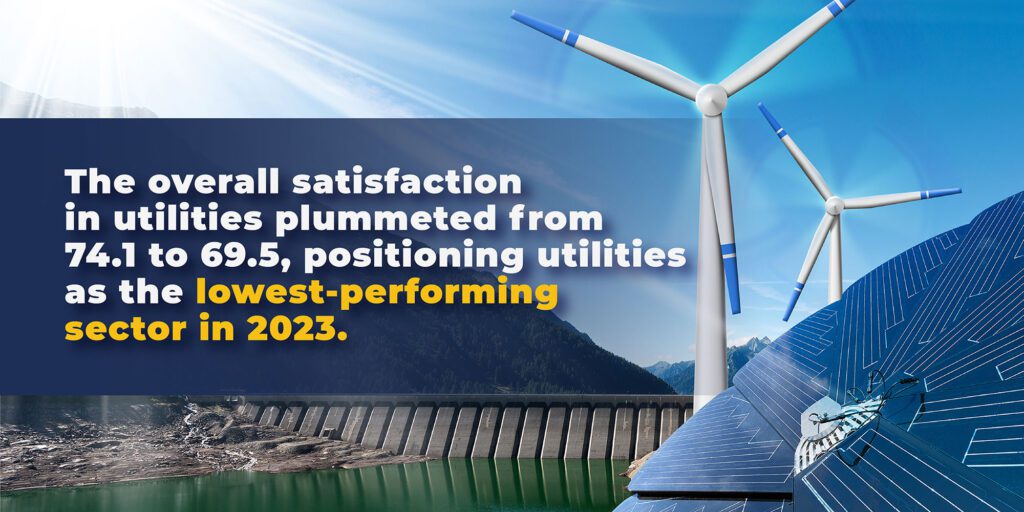
According to a recent report by Utility Week and the international digital payments company PayPal, the trend in the utilities industry, particularly within the UK, has been notably downward in terms of customer satisfaction.
The latest findings from the UK Customer Satisfaction Index (UKCSI) for July 2023 underscore this trend, with overall satisfaction in utilities plummeting from 74.1 to 69.5, positioning utilities as the lowest-performing sector. This decline places them 7.1 points beneath the UK all-sector average.
Specifically, among energy and water companies:
- Energy sector satisfaction plummeted due to steep price hikes, dropping 5.3 points to 67.9.
- The water sector fared slightly better but still fell by 3.5 points to 72.6, affected by storm overflow incidents.
According to Jo Causon, the chief executive of the Institute of Customer Service (ICS), utility leaders should focus on the digital experience to improve customer satisfaction.
The senior management across customer experience, operations, billing, and collections identifies six key challenges in enhancing customer service:
- Integrating modern solutions with existing legacy systems.
- Budgetary limitations and funding challenges.
- Shortage of expertise and human resources.
- Predicting customer expectations for digital services accurately.
- Limited time for implementation.
Green Power To Dominate 90% Of Global Electricity Growth: What Makes Utilities Ready? By the IEA report.
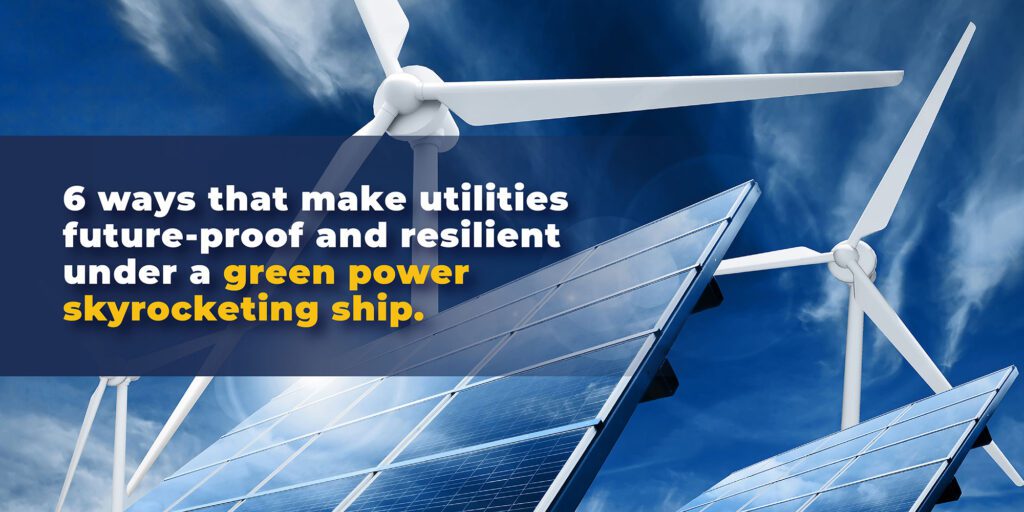
The IEA report attributes that growth to renewable energy policies and market reforms in the US, European Union, and China.
General trends
- Renewable energy sources (solar, hydroelectric, wind, and biomass) are accelerating due to energy price spikes from the war in Eastern Europe, disrupting fossil fuel supply chains.
- Renewables are forecast to be the only sector to grow, while coal, natural gas, nuclear, and oil are expected to decline.
- Offshore wind faces growth challenges due to long permitting processes and inadequate power grid infrastructure upgrades.
- Despite policy and political hurdles potentially slowing renewable energy expansion, upgrading utility infrastructure for renewables is deemed a critical bottleneck.
How do utilities get ready?
- Upgrade and digitise grids to accommodate smaller, variable energy sources like wind and solar
- Level up the capacity to manage the impact of electric vehicles on traditional energy demand patterns.
- Shift towards real-time, digital load management to maintain supply-demand balance.
- Implement a digital twin of the network to accurately understand, predict, and plan energy production and consumption.
- Digitise to enhance network efficiency and reliability by allowing for the lifecycle tracking and maintenance of each component and asset.
- Digitise grid infrastructure before adopting distributed energy resource management systems (DERMS)
Utilities should adopt renewable energy and advanced grid technologies to boost efficiency, reliability, and resilience, and, of course, contribute to a good cause of sustainability.
Why is there a contradiction around the ‘good impact’ of generative AI for utilities?
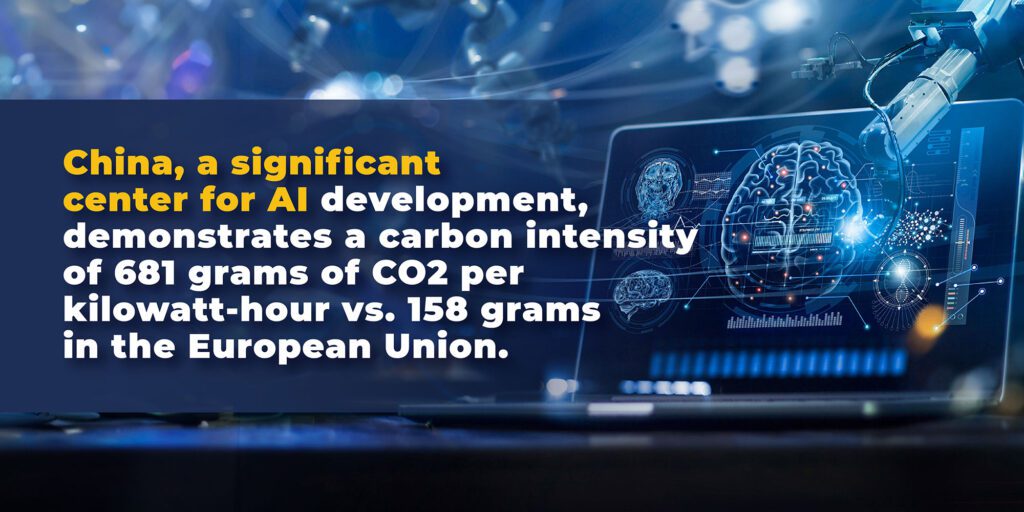
In 2022, data centers, cryptocurrencies, and AI together made approx. 2% of the world’s electricity demand (based on the IEA’s annual electricity report). This substantial energy usage totalled 460 terawatt-hours (TWh).
Alex de Vries, a PhD candidate at VU Amsterdam, delved into the energy consumption of Bitcoin and utilised Nvidia GPUs, renowned as the premier hardware for AI, to gauge the global energy usage within the sector. Nvidia makes appr. 95% of AI hardware sales and provides energy specs alongside sales projections.
Based on the analysis of this information, de Vries projects that by 2027, the AI sector could consume an annual energy range of 85 to 134 terawatt-hours, which is equal to the annual energy demand of the Netherlands. Moreover, by 2027, AI electricity consumption will constitute 0.5% of global electricity consumption.
Now, what’s the environmental impact of AI?
The primary contributors to AI’s carbon footprint stem from the data centers hosting servers and GPUs executing AI algorithms. These data centers demand substantial electricity for operation and cooling, often relying on fossil fuels or non-renewable energy sources.
Furthermore, their distribution across the globe is uneven, leading to varying carbon intensities among regions. Certain areas exhibit higher carbon intensity, emitting more CO2 per unit of electricity generated.
Notably, China, a significant center for AI development and deployment, demonstrates a carbon intensity of 681 grams of CO2 per kilowatt-hour, contrasting with 158 grams in the European Union.
In the meantime, the EU government thinks that AI is an icebreaker for decarbonising energy.
Sam Young, the practice manager in charge of data science and AI at Energy Systems Catapult explains how exactly it can help curb carbon footprints.
AI is currently expediting the planning of overhead lines and streamlining the installation process of heat pumps at the domestic level. By automating tasks such as heat loss assessment and savings calculation from retrofitting, AI demonstrates significant value in enhancing efficiency and effectiveness in these applications.
Here’s a short list:
- unlocking and accelerating domestic decarbonisation, including unlocking financing and getting buy-in from consumers
- utilities getting to net zero with advanced construction timelines and all the new grid connections that are needed
- AI will be crucial to the introduction of flexibility services.
Certainly, the crucial question arises: how will humanity balance the benefits of data centers, which provide vast opportunities through AI, with the huge energy consumption they demonstrate, which is directly linked to carbon emissions?
Stay tuned as we keep up with the latest in the sector and communicate it to our dear clients and partners!
